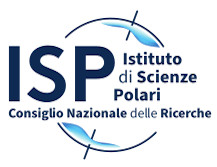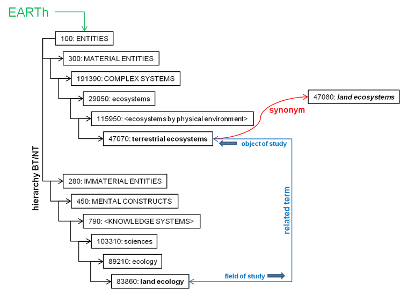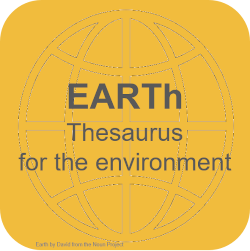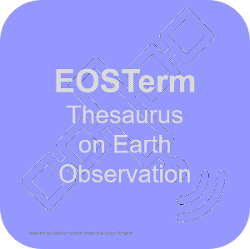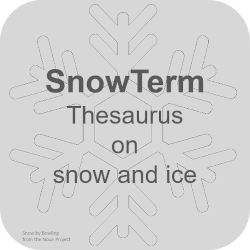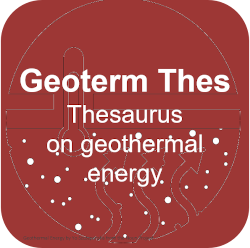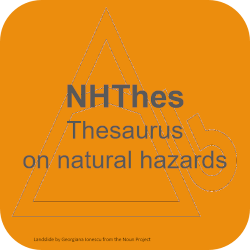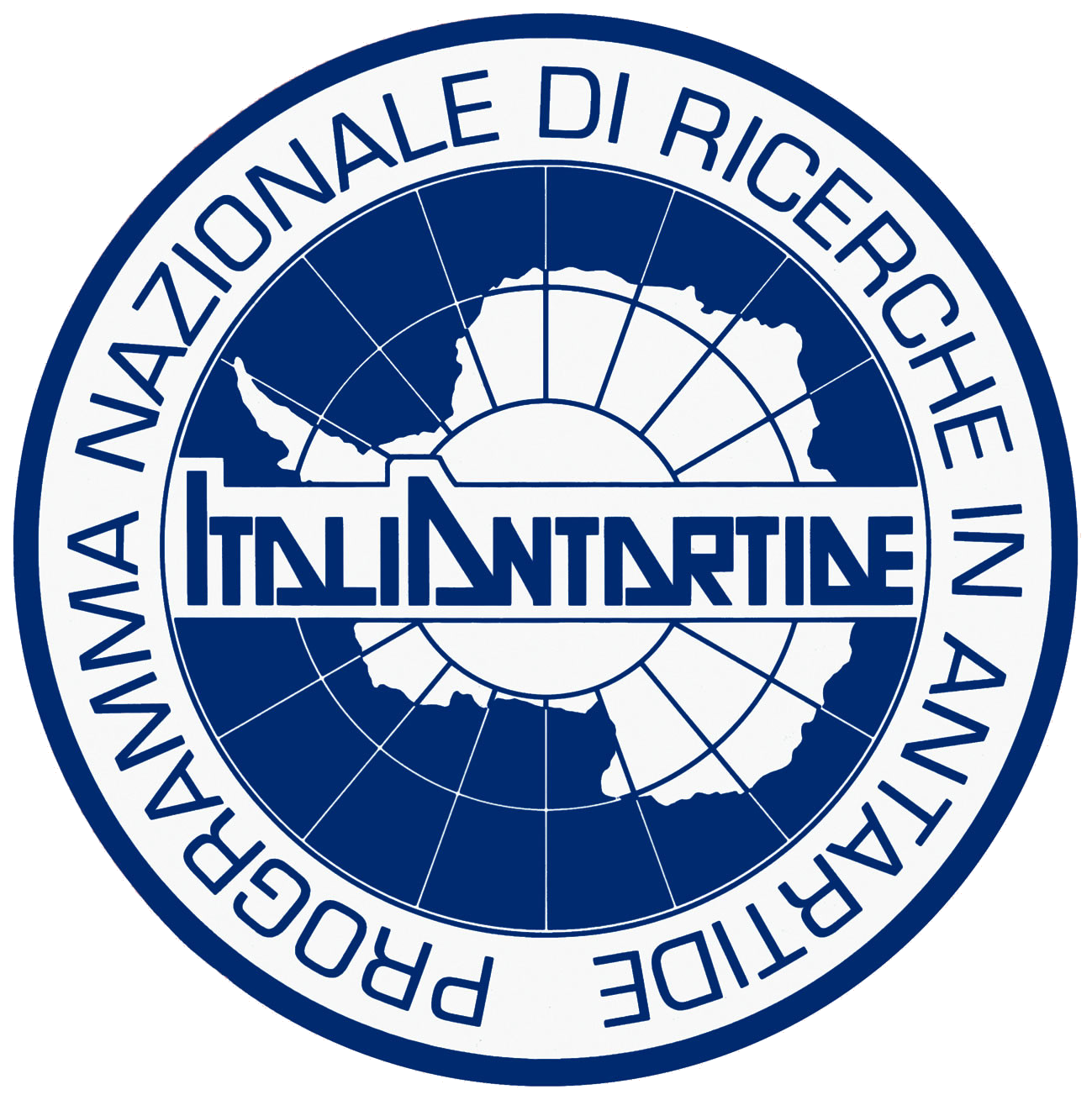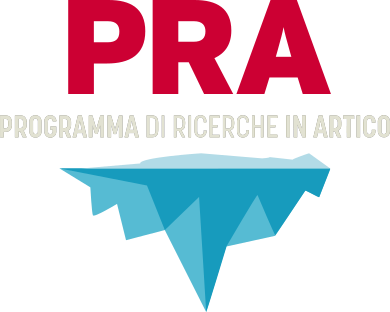
Thesauri (6)
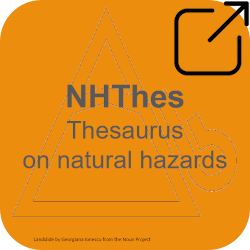 The NHthes is a thesaurus on natural hazards that contains more than 2000 concepts, over 4000 relationships, and 40 synonyms. The primary sources from which the terms were derived are:
The NHthes is a thesaurus on natural hazards that contains more than 2000 concepts, over 4000 relationships, and 40 synonyms. The primary sources from which the terms were derived are:
• DPC Glossary. The glossary of the Italian Civil Protection Department. http://goo.gl/vAMlw
• Australian Emergency Management (EMA) Glossary
• United Nations Office for Disaster Risk Reduction (UNDRR) Glossary
• Intergovernmental Panel on Climate Change (IPCC) Glossary
• World Association for Disaster and Emergency Medicine (WADEM) Glossary
• EARTh Thesaurus (CNR-IIA)
• Thesaurus GEMET
• Crisis Management Vocabulary (MOAC)
• SWEET NASA Ontology: Semantic Web Earth and Environmental Terminology.
The thesaurus is in Italian, the English version is under development.
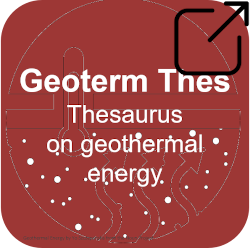 GeothermThes was developed in a project with CNR-IGG (Institute of Geosciences and Earth Resources), "Atlas Project" as part of a geothermal resource information system. The domain vocabulary was acquired from a variety of sources, handbooks and scientific articles, and websites, including:
GeothermThes was developed in a project with CNR-IGG (Institute of Geosciences and Earth Resources), "Atlas Project" as part of a geothermal resource information system. The domain vocabulary was acquired from a variety of sources, handbooks and scientific articles, and websites, including:
• Australian Geothermal Energy Group (AGEG), Geothermal Code Committee Geothermal. Lexicon For Resources And Reserves Definition And Reporting
• Dickson, M. H., Fanelli, M. - Cos’è l’Energia Geotermica?. Istituto di Geoscienze e Georisorse, CNR , Pisa, Italia.
• International Atomic Energy Agency (IAEA) - Joint Thesaurus, 2006. ETDE/INIS Joint Reference Series No. 1 (Rev. 2)
• Leffel, C. S., Eisenberg, R. A. - Geothermal handbook, 1977. The Johns Hopkins University. Applied Physics Laboratory
• Manzella, A., Ungarelli, C. – La Geotermia. L’energia sotto i nostri piedi. Il Mulino. Collana Farsi un’idea n. 192 (2011)
• Nevada Geothermal Power Inc. - NGP’s Geothermal Glossary of Terms
• Progetto VIGOR. Energia dalla terra. MiSE, CNR, 2011. Valutazione del potenziale geotermico nelle Regioni della Convergenza
• Unione Geotermica Italiana (UGI) – CNR. La geotermia, ieri, oggi, domani. Allegato al N. 1-2007 di Geologia Tecnica & Ambientale
• U.S. Department of Energy, Energy Efficiency & Renewable Energy (EERE) – Geothermal Glossary
• New Zealand Geothermal Association – Geothermal Glossary
• Geothermal Education Office (GEO) - Geothermal and related terms
• International Geothermal Association (IGA) - Geothermal Conference Paper Database
• European Geothermal Energy Council (EGEC) – Publications
• Orkustofnun, the national energy authority of Iceland - Geothermal
It contains 2000 concepts in English and Italian.
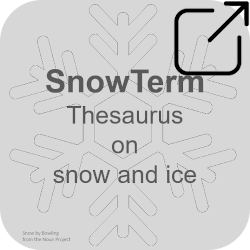 SnowTerm is an example of a structured reference multilingual scientific and technical vocabulary, covering the terminology of a specific knowledge domain in the polar and the mountain environment. The thematic areas, covered at present, deal with snow and ice physics, snow and ice morphology, snow and ice radiometry, remote sensing and GIS applied to cryosphere environment, sea ice, avalanches, glaciers. The first sources used to collect the terminology consist of the :
SnowTerm is an example of a structured reference multilingual scientific and technical vocabulary, covering the terminology of a specific knowledge domain in the polar and the mountain environment. The thematic areas, covered at present, deal with snow and ice physics, snow and ice morphology, snow and ice radiometry, remote sensing and GIS applied to cryosphere environment, sea ice, avalanches, glaciers. The first sources used to collect the terminology consist of the :
• Glossario dei termini usati nei bollettini nivometeorologici by AINEVA and by Friuli-Venezia Giulia Region
• Sea Ice Glossary of the Scientific Committee on Antarctic Research-SCAR
• USGS Glossary of Selected Glacier and Related Terminology
• National Snow and Ice Data Center (NSIDC) Cryosphere glossary
• American Geophysical Union (AGU) Glossary of Ice Terminology
• Intergovernmental Panel on Climate Change (IPCC) "Special Report On The Ocean And Cryosphere In A Changing Climate - Glossary"
• Barry, R., & Gan, T. (2011). Glossary. In The Global Cryosphere: Past, Present and Future (pp. 350-357). Cambridge: Cambridge University Press. doi:10.1017/CBO9780511977947.014
• M. Maisch & P. Wick: dns-Themenheft „Gletscher“, Nr. 7/8 (2004) and J. G. Cogley et al.: Glossary of glacier mass balance and related terms, IHP-VII Technical Documents in Hydrology No. 86, IACS Contribution No. 2, UNESCO-IHP, Paris (2011)
• "Sea Ice Nomenclature" (Merenkulkulaitoksen julkaisuja 5/2002)
• Trilingual "Glossary on snow and avalanches" by the Working Group on Avalanches Warning Services of the Swiss Federal Institute for Snow and Avalanche Research
• "Vecjezicni Slovar - Sneg in plazovi" developed by Pavle Šegula
The terminology of these sources was analysed with respect to the degree of semantic relevance in the field. Terms too generic or considered as non-pertinent were excluded. Groups of terms that could be collected in specific appendixes were also excluded. At present, the database contains around 3.700 terms. Concerning the vertical structure, the Classification Scheme already in use for the development of the EARTh Thesaurus was adopted.
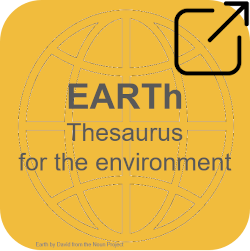 EARTh terminological content is derived from various multilingual and monolingual sources of controlled environmental terminology:
EARTh terminological content is derived from various multilingual and monolingual sources of controlled environmental terminology:
• GEMET - GEneral Multilingual Environmental Thesaurus
• EnvDev, the Terminological Bulletin for the Rio de Janeiro Conference on Environment and Development
• IPPC glossaries
• UNEP EnVoc
• Italian Earth Sciences Thesaurus
plus other thesauri and documents concerning specific sectors like inland waters, pollution and climate changes, environmental safety and disasters management, etc.. The selection, as well as the semantic and morphological processing of this terminology, is still in progress and requires the management of problems connected with the utilization of multiple sources, developed in different operational fields and characterized by different approaches, concerning conceptual structuring and terminological representation.
A further conceptual and terminological enrichment, and increased semantic control of the system was defined and partially implemented. It must be said that the incompleteness of the available terminology depends not only on the possible gaps of the sources or on the evolution of knowledge and technical language used in the environmental field - that requires a periodical updating of the terminological systems - but also and perhaps mostly on the kind of approach utilized by these sources. Usually, the environment was analysed with a static and sectorial approach, reflecting mainly a vision of the environment pertaining to classic science or to environmental policy that transforms its paradigms in operational terms. This implies, for example, limited openings to the development of contemporary science, even if they have a prominent role in offering renewed approaches and methods to analyse the environmental issues. One goal of our present work is to adopt a more inclusive approach, concerning both conceptual coverage and semantic organization.
Through managing multilingualism, issues of cultural diversity will also be taken into consideration. Structural divergences that could concern multilingual thesauri -here we are referring to regional diversities that happen in the context of a common general culture, as the Western culture- will be considered. But problems posed by cultures that are epistemologically far apart from ours will also be considered. The feasibility to open the Thesaurus to a really multicultural dimension will be evaluated.
The thesaurus is constantly updated. At present, it contains about 14.500 terms, in English and Italian. It is provided with hierarchical relations and classified according to a matrix system.
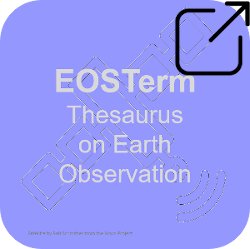 The project was started aiming at developing a controlled and structured terminology system related to GIS and remote sensing. The first phase corresponded to the identification of potential sources of terminology, the selection of proper terms, their extraction and the creation of a terminology database.
The project was started aiming at developing a controlled and structured terminology system related to GIS and remote sensing. The first phase corresponded to the identification of potential sources of terminology, the selection of proper terms, their extraction and the creation of a terminology database.
The sources used to collect the terminology consist of:
• GIS Dictionary of Association of Geographic Information - AGI
• CCRS Remote Sensing Glossary of Canada Centre
• ATIS Telecom glossary 2000
Other sources have been considered:
• Glossary of Cartographic Terms of Texas University
• Dictionary of Abbreviations and Acronyms in GIS, Cartography and Remote Sensing of the University of California
• Glossary of Oceanography, Climatology and the Related Geosciences
• GIS Glossary of Environmental Systems Research Institute Inc. (ESRI)
• Glossary of GIS and Metadata terms of Environmental On-Line Services (ERIN)
The terminology was analysed with respect to the degree of semantic relevance in the field of remote sensing and GIS. The terms too generic or that have been considered as non-pertinent were excluded. Groups of terms that could be collected in specific appendixes -for example, terms related to international organisation or institution- were also excluded. Finally, the terms that have been considered as more specifics about GIS, as well as those more details for Remote Sensing, were identified and marked.
Terms have been classified according to the EARTh upper structure. The semantic classification foresees the allocation of each term in a relation tree starting from the more general concept represented by the category. The result is an English-Italian terminology system containing about 3.000 terms.
Introduction
Thesauri are controlled and dynamic vocabularies of terms, where semantic relations (hierarchical, associative, equivalence) between terms are explicitly declared. They are instruments for the semantic control of the language and can be used for indexing, classification, metadatation, cataloguing and retrieval of information in databases.
Thesauri can adopt different classification structures based on general categories and facets, on a thematic or disciplinary base, or following a mixed approach. To represent the semantics of a term it is necessary to choose which types of characteristics and how many of them need to be considered and included in the representation. While there is the necessity to share a common and stable meaning of the terms to guarantee communication within a community, openness to further exploration of meaning should also be ensured so as not to impoverish its richness and complexity. Highly structured and refined, but flexible tools are needed to deal with issues such as information management on the web or to satisfy the growing demand of semantic interoperability. The goal is the development of a thesaurus that could include the above assumptions aiming to become an advanced tool to be applied in environmental information management. To sustain environmental policy and research, not only access to- but also a high-level quality of information is required. There is the constant need to follow the terminological changes in science and technology (new terms and/or new meanings, new topics and issues). Starting from this premise, we adopted a more inclusive approach concerning both conceptual coverage and semantic organisation, and taking also into consideration suggestions arising from the development of applied ontologies, we started to work on thesaurus format containing some innovative elements. Copyright for the CNR-ISP Vocabularies structure and content in English and Italian is licensed under a Creative Commons Attribution-NonCommercial-NoDerivs 4.0 Unported License.
 Ministero dell'Universita e Ricerca
Ministero dell'Universita e Ricerca
Programma Ricerche Artico
Programma Nazionale di Ricerca in Antartide
 Ministero degli Affari Esteri e della Cooperazione Internazionale
Ministero degli Affari Esteri e della Cooperazione Internazionale
L'Italia e l’Artico
L’Italia e l’Antartide
CNR-ISP
National Research Council
Institute of Polar Sciences
c/o Scientific Campus - Ca' Foscari University Venice - Via Torino, 155 - 30172 VENEZIA MESTRE (VE)
Phone: +39 041 2348547 - E-mail: protocollo.isp AT pec.cnr.it
Fax: +39 041 2348 549 - Codice Fiscale: 80054330586 - P.I.:02118311006
Unless otherwise indicated, the content of this site is licensed : Attribution Non Commercial Share Alike 4.0 International (CC BY-NC-SA 4.0)
Privacy policy e Cookie policy - Transparent administration (CNR)
